What you thought you did: Traveled back in time to rescue (or at least make amends with) a princess after destroying your relationship with her through poor decision-making.

What you actually did: Frightened a sleeping woman into fleeing for her life as you pursued her relentlessly, because you’re her deeply troubled stalker.

On the surface, at least.
Wait, what!? For the moment, let’s disregard all talk of nuclear weapons and “what Braid really means.” On the surface, what we have is the story of a man named Tim, who’s searching for a princess after he fails, upsets or otherwise alienates her. It’s not clear what he’s done – only that he’s done something that’s made her sever ties with him. And as he gets closer to finding her – by unlocking the game’s first level and effectively traveling back in time – it becomes increasingly apparent that something’s not quite right here. The biggest hint comes during the prologue of Level 1: Tim seems to “live oppositely” from other people, we’re told. And then there’s this weird tidbit, which might hint that Tim suffers from schizophrenia:
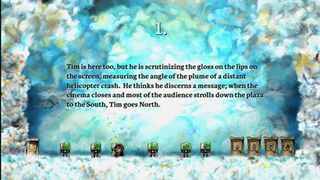
When Tim finally reaches his princess, however, all that seems to be moot. She’s carried down a rope by an evil-looking knight, only to escape his clutches and scream to Tim – who’s trapped in a cave underneath them - for help. Furious, the knight jumps up and down, causing a near cave-in just before an enormous wall of flame moves toward Tim and the princess, threatening to consume them.
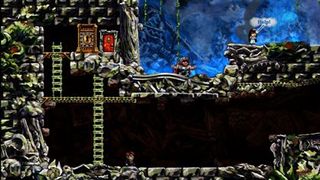
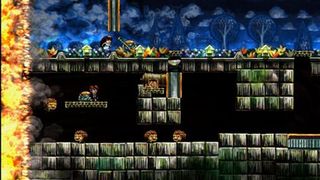
Over the course of the level, they flee from the wall of flame and work together, with each flipping switches so that the other can pass through. It’s a beautiful, desperate moment, right up until the princess comes close to the house at level’s end. Here, something weird happens: she climbs down a ladder and causes a broken chandelier to fall in reverse, which isn’t something that would… help Tim, necessarily.
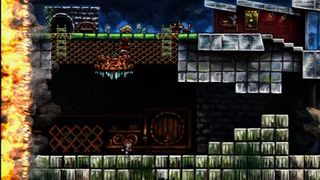
It doesn’t seem to bother Tim, though. Racing against time, he climbs up a lattice wall to the princess’ balcony, eager to be reunited with her, and then…
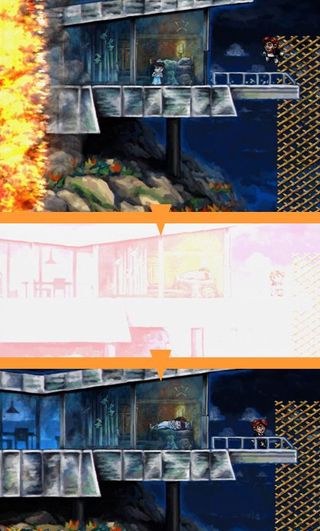
There’s a blinding flash, and the flames are gone. The princess is asleep in bed, and there appears to be nothing you can do.
Except that Tim, for the first time, moves left when you tell him to move right, and vice versa.
Remember what the game said about Tim living oppositely from other people? Only by using Tim’s ability to rewind time can you see events as they actually occurred: Tim climbed to the princess’ balcony, at which point she woke up, terrified to see an intruder at her window. She ran, with Tim in hot pursuit, vainly flipping switches to throw obstacles into his path. She’d dropped the chandelier in an attempt to crush him. And as for the “evil-looking” knight, well, he was actually just there to rescue the princess.
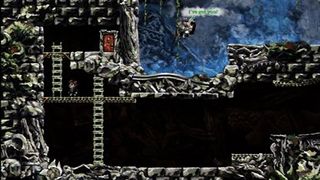
From Tim.

What you thought you did: Destroyed 16 towering monsters so that a god would repay you by bringing your beloved back to life.
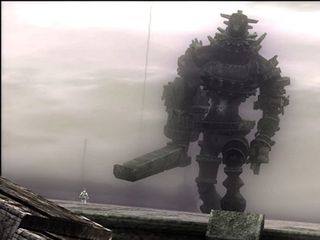
What you actually did: Restored power to a bloodthirsty demonic force, thereby releasing it into the world and damning yourself to become its host.
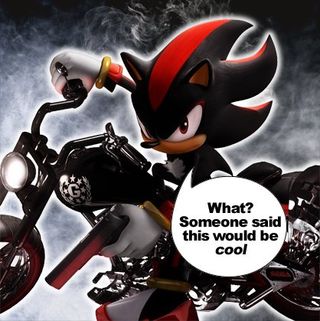
Wait, what!? Unlike the other games on this list, it’s possible that the hero in Shadow of the Colossus knows full well what he’s getting into – but you sure as hell don’t. Not at first. No, at first this is nothing more than the story of a typical boyish hero – Wander - who wants to resurrect his dead love interest, and has to take on the Herculean task of destroying 16 ginormous horrors in order to bring her back. It’s a beautiful statement on the lengths to which we’re willing to go for love – or is it?
You probably won’t have any doubts in the beginning. Early on, the Colossi are fearsome, melancholy beasts, and the sheer unfairness of the you-to-them size ratio should be enough to convince you that killing them is the right thing to do.

But as you forge ahead with hunting down and killing the Colossi, something will start to gnaw at you. While some of the Colossi are clearly trying to kill you, others are indifferent, even harmless. Some are so beautiful that killing them leaves you feeling like you’ve just smashed a stained-glass window. And the only reason you’re doing any of it is because a voice from the heavens is telling you to.
Even if none of that triggers alarm bells, the tendrils that stab into Wander after every execution can’t be a good sign.

Neither can the gradual deterioration in Wander’s condition after each battle, which happens so slowly that you might not even notice it until you’re about to fight the 16th Colossus.

Above: Note the change in stance between the game’s beginning and its end
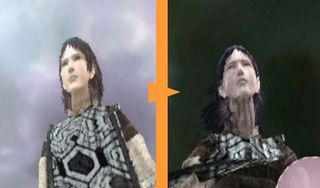
Above: Not to mention the junkie-like decay in Wander’s face
At any rate, you know someone from your village is coming to try and stop you, so you need to hurry, but in all likelihood they’re just small-minded primitives coming to enforce a taboo on the “cursed” land in which you’re hunting Colossi. And when they do, they’ll take away the body of Wander’s dead lover Mono, and it will all have been for naught.
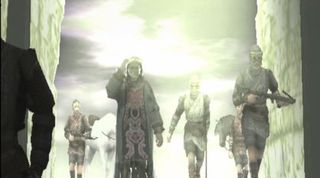
However, it turns out that the “primitives” are a band of warriors headed up by the high priest Lord Emon, and they’ve come to stop you from doing something horrible. Of course, you were so diligent about your task that they came too late: after killing the final Colossus, Wander was firmly under the control of Dormin, the demonic “voice from the heavens” whose essence had been sealed away within the 16 Colossi.

By killing the Colossi, Wander released Dormin’s spirit into the world, where it quickly decided to take over his body and morph into a monstrous horned shadow. You then got a chance to control the shadow creature as it attempted to kill Emon and his men – not that it did any good, as Dormin was way too slow to stop Emon from escaping.

Did Wander know what his fate would be from the beginning? Did desperation drive him to sacrifice himself to a demon in the hope of bringing Mono back to life? It’s hard to say, but the ending’s twist forced us to completely revise our view of what up until then had seemed like a fairly standard boy-hero-saves-sleeping-princess story, and turned it into something dark and tragic. And then, just as we were coming to grips with that, we were confronted with the heartbreaking sequence in which Wander tries futilely to run to Mono while Emon’s containment spell sucks him toward a shimmering pool.

Above: Fight it, Wander! No, don’t fall over! Aww… aw, hell
It all still has a happy ending, of course; just not the kind you might have expected. But the bizarre twist that precedes it – along with the revelation that young, tragic Wander is actually the story’s de facto villain – is a big part of why Shadow of the Colossus is one of the PS2’s greatest games, as well as its most surprisingly evil.
Mar 2, 2009


Gaming's most befuddling finales explained both in a sentence and in detail

Why Sonic's not a platformer and Final Fantasy isn't an RPG at all

In the ‘80s it seemed implausible. Now it's fact

